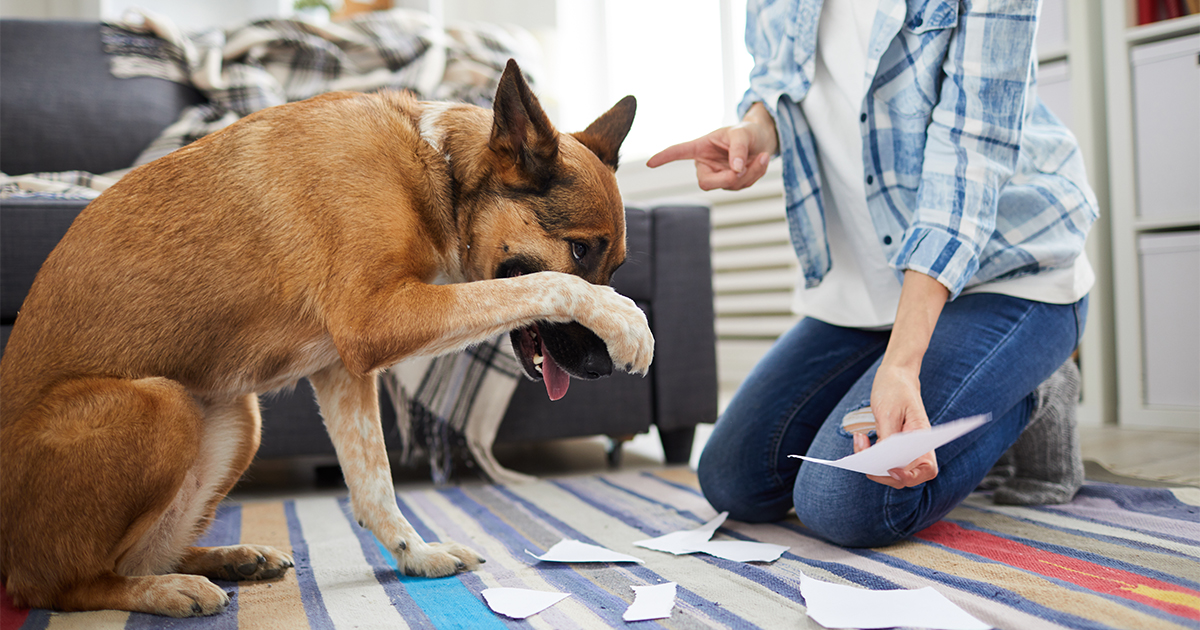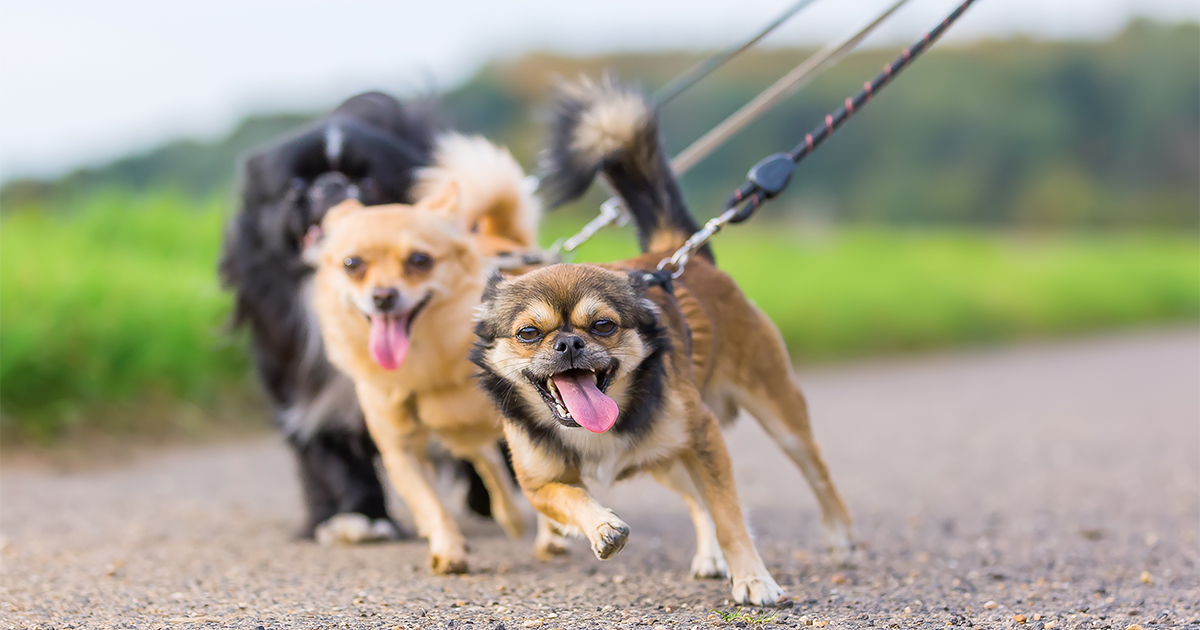
Eight common Misunderstandings about Dog Behavior
The big dog needs the garden, the small dog feels especially comfortable in the house
I like to respond to this widespread rumor by comparing two breeds: the small agile Jack Russel and the huge Borzoi Greyhound, not even ten kilograms in contrast to half a tenth elegance. The hyperactive Jack Russel is undoubtedly the one most in need of a walk, especially in the early years of life, while the Greyhound, even the oversized breeds, usually behaves like a cat at home, often going unnoticed. In general, I don't think there is a so-called “garden dog” at all. For certain outdoor breeds, such as Newfoundlands, having access to the outdoors is an advantage, especially in seasons when it gets too hot in the apartment or house. On the other hand, particularly protective and territorial breeds can exhibit behavior that might not please the neighbors, such as barking at strangers. For dogs of all sizes, a garden can be an advantage, but it’s not a necessity. Belonging to a social group is crucial for a dog, and even a large dog will always prefer the sofa with his favorite family member over being alone in the yard.
Dogs love to be touched by strangers
We are often taught that if you approach a dog or offer your hand, and it moves towards you to get a sniff, that it’s an invitation to pet or touch the dog. That is not correct! My favorite question: Why would a dog go around asking for the attention of any stranger? Even kennel dogs don't do this despite spending most of their lives alone. If a child were to seek love from strangers, it would seem strange and out of place, whereas we expect 100% affection from a dog? As if that weren't enough, physical contact with the hand—stroking—is not part of a dog's natural behavior as it is with a monkey. Primates, including humans, communicate affection through hugging, touching and kissing, while carnivores, which include the dog, communicate affection through mutual nibbling and licking (grooming behaviors) or by sharing resting places. A dog may get used to our strange way of showing love and learn to appreciate stroking, but usually only accepts it from members of its own social group or from close friends, not from just anyone. Another fatal mistake is to touch a dog's head, as this is by far the most sensitive area for any dog and can disturb them. If you want to befriend a strange dog, it is better to ignore him and be there when he decides on his own to befriend you, letting the dog take the initiative!

If your dog pees in the house, put his snout in the pee and punish him for his “wrong-doing”
There is always a reason why a dog handles his physiological needs in the house, and to solve the problem, we should first find out the reason. A young puppy does not yet have proper sphincter control; therefore, when the urge overcomes him, he will relieve himself where he is as there is nothing else he can do. When punished by having his snout stuck in his pee and hitting him, for example, he learns to pee in the house out of fear of his human and will sometimes even eat his poop to hide the evidence and avoid punishment. After adolescence, other reasons could be to blame, such as health problems like cystitis or dysentery; behavioral problems, for example, related to welcoming a new family member; fear; or the dog not being walked sufficiently.In any case, punishing a dog will not make the situation better, on the contrary, it could make the situation worse.
If the dog pulls, use a choke collar
A choke collar is an often incorrectly used tool. In some cases, it is necessary to use it so you and your dog feel safe on walks. However, this tool is not a fundamental solution to stop a dog from pulling on the leash. When a dog pulls, there is a reason: it wants to gain more space to sniff, is afraid of the environment and wants to escape, dislikes being on a leash, does not trust its handler or is afraid of other dogs and/or people... These are just a few of the possible causes that can turn a walk into an exhausting nightmare. Your dog may eventually stop pulling with the choke collar because of the choking sensation, but when they stop coughing and desperately gasping for air and recover, they’ll pull again as soon as possible. To solve the problem, we must be patient and train the dog on a leash, which should be a means of communication and not torture.

The owner is the herd leader, the dog eats after the family, and the sofa and bed are taboo zones
Another myth to discuss is that of the pack leader, which makes us feel like "supermen" and "superwomen." In fact, science has for some time replaced this term with the word "handler", which better describes the role in a social group or family. Some dogs have a sociable character, others are dominant, but it would be misleading to define them as submissive and the others as pack leaders when the relationships that prevail in the social group are much more complex. For decades the rumor has circulated that we should define our role by taking the dog's bowl away after he stopped consuming, how would you react if I would take away your chocolate cake. I would be very angry, so why would the dog accept such stupid habit? On the contrary, I recommend giving the dog its food before we sit down at the table ourselves, because with a full stomach our companion animal will be less motivated to beg and will let us eat in peace. The role of the pack leader is not even defined by who occupies the beds and sofas, on the contrary: as mentioned above, dogs like to sleep with the rest of the pack! It is only challenging if the dog does not want to share its resting place and protects it from other family members. In these cases, it is wise for everybody to have their own exclusive resting place.
Male dogs don't get along with other male dogs
Every dog owner has heard this question during a walk: "male or female?" As if the potentiality of a dog fight is based on the dog’s gender. The better question is whether the dog is socially adjusted. Male or female, a dog who can “read” his surroundings and make himself understood without misunderstandings prefers not to get into trouble. Dogs are peaceful animals that avoid unnecessary fights, as a wound can lead to death, and the predominant goal of any living creature is survival. Fighting is therefore the last way out. When a dog does gets into trouble, it is often the human’s fault. For example, releasing him in a dog park where he is forced to interact with other, strange dogs. Some dogs may be unfriendly, unable to distance themselves or withdraw from the situation. To avoid issues caused by under-socialization and over-excitement, a good option is to let your dog run free in a large, unfenced space, which allows dogs to choose to only interact with friendly dogs and avoid "bullying”—whether they are male or female.
It’s OK to keep small dogs indoors
I’ve visited houses where I’ve been openly told that the little dog only wants to go on walks when the weather is nice, otherwise he stays in the apartment and defecates in the house. More and more, people who want a dog, but have little time to devote to one, end up choosing a small canine companion, treating it much like a cat by keeping it indoors at all times. However, an indoor environment don’t offer dogs enough stimulation. It is boring and monotonous, and animals locked in four walls are often depressed and not challenged enough. When dogs go outdoors, they learn about the world, get mental and physical stimulation, and exercise. In particular, denying a puppy it’s right to freedom often leads to serious behavioral problems such as separation anxiety, vandalism, constant barking, aggression and anxiety. You would also go crazy being locked up in a house, something we recently got a taste of during the Covid-19 restrictions, so why would a dog or cat be happy with such living conditions? Nobody is happy in prison.
Shelters only have dogs with difficulties
A shelter isn't a dog prison where "dog criminals" with behavioral problems are locked up. In fact, dogs with behavioral problems only represent a small group; the rest simply have had the misfortune of going missing or falling into the hands of the wrong people, suffering abandonment, rejection or abuse. Shelter dogs are fighters: dogs who’ve been able to defy all odds and manage to find a balance despite the hardships they’ve endured. They are proud, strong, and sometimes fragile, characteristics that are often forgotten with the illusory belief that a purchased dog is more balanced than a rescue dog. That is not necessarily correct! In fact, many breeders are unscrupulous and don't care about the welfare of the animals. Puppies from mills tend to grow up in environments that are unsuitable for their cognitive balance, often confined to kennels, and the females are so stressed from back-to-back pregnancies that they are unable to fulfill their parenting role. Puppies grow up in a dysfunctional environment with incompetent parents and, as a result, may have severe behavioral problems. Isn't it more ethical and economical to adopt one of the many raw treasures hidden in animal shelters?


All comments